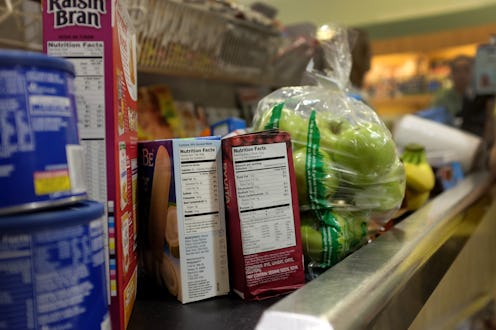News
Just How Much Food DOES The U.S. Waste Every Year?
Before you throw out those left overs, or buy those vegetables you know will only go moldy in your fridge, consider this take a minute to think about what you're doing. According to a report from the U.S. Department of Agriculture, America is incredibly wasteful when it comes to food. In fact, every year we waste a totally of 141 trillion calories. That's "trillion." With a "T."
Considering how many people go hungry in the United States, not to mention the world, these numbers are pretty shameful. In 2010, 133 billion pounds of food was lost, which amounts $161 billion and 31 percent of our nations food supply. In other words, we threw away roughly a third of our food.
Approximately 49 million Americans live in food insecure households, including over 15 million children. If one does the math, then 141 trillion calories per year could, instead of being wasted, provide each of these people with over 7,000 calories per day.
Obviously feeding food insecure households is not as simple as not throwing away that leftover spaghetti – though food reclamation from restaurants and college dining halls can have a big impact on communities. However, the scale of food wasted in America is so enormous that the USDA estimates eliminating food waste in this country would cause global food prices to drop. That right. By simply not wasting food, Americans could make food more affordable for people across the world.
Like I said, rethink buying stuff you're not sure you'll use. Because although it's not possibly ever eliminate all food waste, changing our buying habits is a good place to start cutting back on the problem.
And the problem goes beyond hunger and higher food prices. Wasted food is also wasted water used in irrigation and wasted fuel for transport. Processed foods that are thrown away waste the power needed to make and package them. And wasted food also takes up landfill space and typically releases greenhouse gases as it decomposes. So this is an issue with not only social implications, but environmental impacts as well.
And, you know, it costs $161 billion a year.
The report also indicates that some types of food are more likely to be wasted than others. Top of the list are dairy products, vegetables, and grain products, which together represent over half of all wasted food.
The report suggests that industry-led initiatives or government information campaigns could help combat the problem. But in the meantime, it's also worthwhile as a consumer to just take a look in your cart at the grocery store and ask yourself, "Am I really going to eat all this?" And if the answer is no, there's no shame in putting a few things back.
